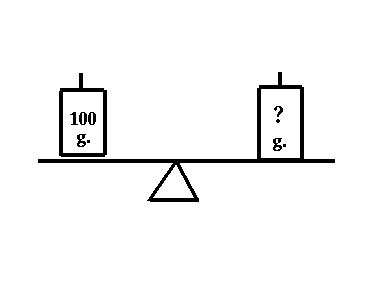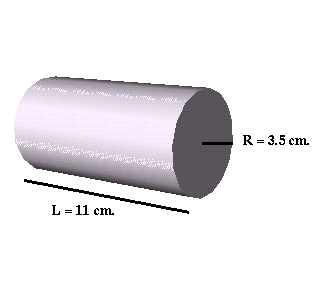| First use
this form and investigate how the area and volume of a cube change every time
we double the length of the side. Start with 2 and keep doubling the side. You
might want to make a table of your data to keep track. To
use the form, type in any number in one box and then click on either of the other
two boxes.
Questions--
3) Make
a graph of length of the side of a square vs. the area of the square (plot length
of side on the x-axis (in cm.) and area in cm2 on the y-axis. What
relationship in physics also show this type of graph?
Do
you know the difference between mass and weight?
 |
| 4) What mass
is needed on the right side to balance the lever on earth? What mass is needed
to balance the lever on the Moon? Assume the two blocks are equal distance from
the fulcrum and the balancing beam has minimal mass. Explain
your answers.
|
 | 5)
A mass is attached to the spring scale on earth. The scale reads 100
g. as shown. The spring scale is now brought to the moon. What mass will be needed
for the scale to read 100 g.? Explain your answers. 6)
How is a spring scale different than a triple-beam balance? How is it similar?
|
7) Find
the density of a cube with a side of 4 cm. and a mass of 1235 grams. What is the
cube made of?

8)
What is the mass of the cylinder on the left assuming it is made of ice?
| 
